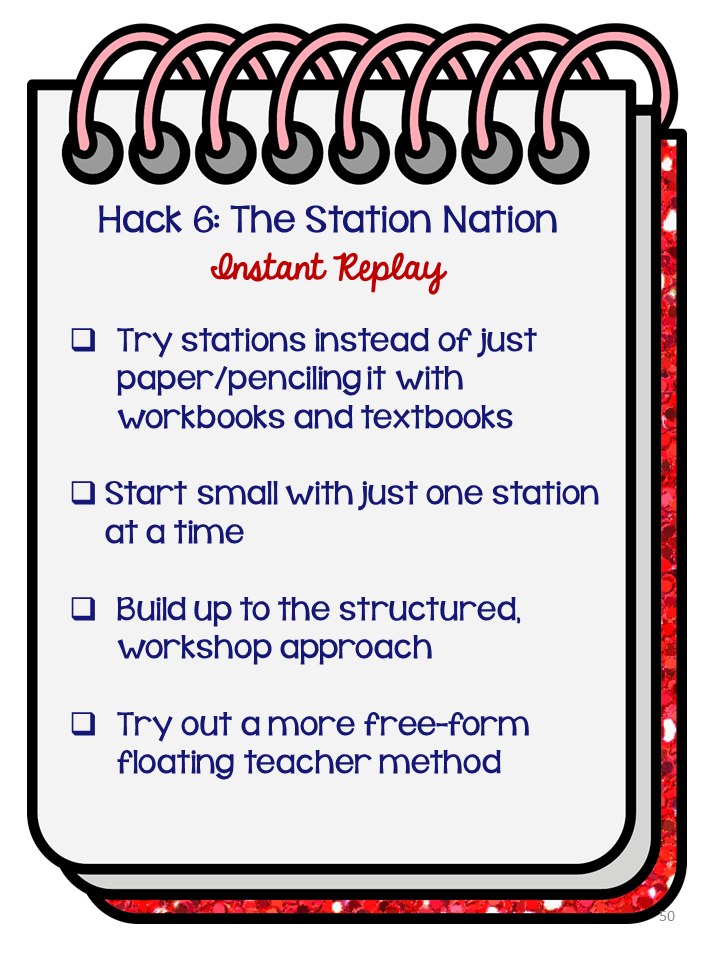

If you are still doing the old-school read through the chapter in the textbook method of teaching social studies, I implore you to please stop the insanity. Another win-win is doing learning stations, which is a fancy name for centers. Yet another tip I talked about in my “Art of the Social Studies Teacher Hustle” post was the name game. Give an activity a fancy name (kind of like learning stations versus centers) and it automatically makes it more interesting.
There are many different ways that you can set up stations in your classroom. And first off, this is not something that I would do every day. Sounds like a great Friday afternoon activity to me! I tried it a few ways. If I would have only taught Social Studies, I would have done stations more regularly. I had to squeeze in Science, too. I’m just telling you what worked for me in hopes that it will spark ideas for what can work for you with your current roster of kiddos! It varies depending on your class and the current content. You may have a class with multiple behavior problems which limits your ability to do hands-on stuff. And it is perfectly acceptable to have one student (or more!) not participate. Their station can be a traditional workbook. Don’t think I didn’t go there. I did!
Model 1: Guided Social Studies/Workshop Model
The “Guided Social Studies” method was structured like I had done Math Workshop in the past. I started with a 15 minute mini lesson followed by 45 minutes of station time. This was split into 3 rotations of 15 minutes. This was the ideal theory, in practice did not always happen! I split the kids into 3 groups. My class size was 24ish so worked out to be about 8. I would not suggest more than 8 kids in a rotation.
The three stations were: a teacher-led small group, a partner activity or small group game, and the other was independent seat work (sit down and be quiet kind of thing). The partner activity was always something that was a review. New content would be introduced in the small group with the teacher. The independent station would usually be something for a grade that was due that week.
Disclaimer-I did let certain kids sit on the floor for independent work as a bribe occasionally. Oops, I mean incentive. It works, trust me!
Whatever I planned for the partner/small group was something that didn’t really matter if it was finished. It was usually review or extra practice. That way if needed the “loud” activity got the boot!! And another reason was I welcomed students who needed more help to stay at the guided station with me more than one round. Often a second go clarified the content! I had some kids sit through all three times!! And sometimes the kids wouldn’t feel comfortable physically staying there but would choose to sit super close by where my station was so they could listen in. That was fine with me!
#spoiler I have also done choice boards and menus and a whole slew of other options. We don’t want to border into War and Peace territory with the content in this post so stand by for more on that!
But wait…there’s more……you can do this with primary students, too!! I unexpectedly ended up teaching 1 st grade a few years ago and you better believe I did stations with them, too! The format was usually teacher activity, technology, and partner matching cards, etc. Buddy reading content related books was a very popular station idea, too! Lots of times I combined Daily 5 with Social Studies content. See this short video below for an example! You can find the Founding Fathers and Me Cards by clicking the picture under it.




Football Stations:
I also did special Veterans’ Day stations which you can see here:

Check out the rest of the blog series here:
The ideas in this blog series are the framework of my e-book. Click the picture to check it out!